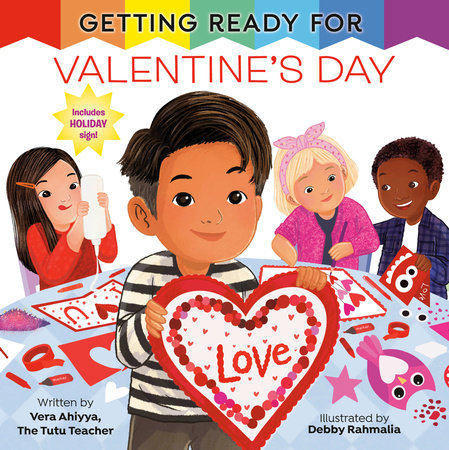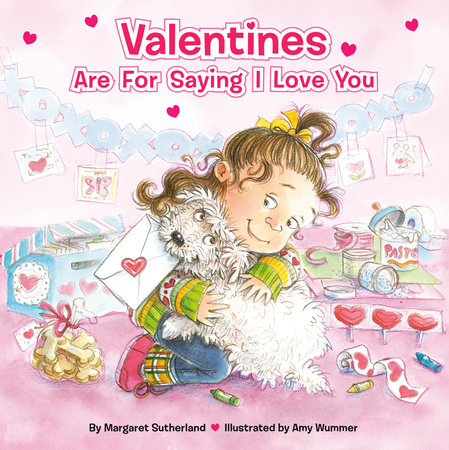5 Low-Stress Ways To Build Literacy Skills While Making Valentines
by Lindsay Barrett
Valentine’s Day can mean many things, depending on your life stage and affinity for greeting cards, chocolate, and flowers. If you’re a parent, you may hope your kiddos will cooperate to send cute Valentine’s Day cards to loved ones. You may also be asked to support a daycare or school card exchange. The span of my five kids’ ages means that our household has been mass-producing classroom valentines for over a decade. Our annual routine includes key tricks for minimizing frustration and keeping the focus where it’s meant to be: Making a kind gesture toward others.
A lovely bonus: Preparing friendly cards is an excellent way for children to practice skills they’ll need to become successful readers and writers. Check out these five tips to work on early literacy concepts while making valentines — and have fun doing it.
Introduce the task with books
A year is a long time in a child’s life, and they may not remember prior Valentine’s Day celebrations. Keep in mind it’s normal for little kids to focus on themselves first; putting time and energy into making something to give away can be challenging. (My current toddler would prefer to keep every card she makes.) Books can help build excitement about exchanging valentines and help kids know what to expect. Introducing vocabulary using books and reinforcing it with a memorable hands-on experience makes that knowledge stick. Check out some great Valentine’s Day book options at the end of this post.
Work those little fingers
Writing requires fine motor strength and skill, and little hands start preparing for the task long before they achieve perfect penmanship. Valentine-making is full of chances for a fine motor workout. If you craft homemade valentines, children will cut, write names and messages, glue, stamp, and press stickers, requiring them to use their small muscles in coordination. Store-bought cards may be folded, stuffed in tiny envelopes, have stickers applied, or be accented with scribbles and names.
If you notice a particular task is challenging for your child — like handling tiny stickers, holding a pencil, or writing in a confined area — don’t stress. Use it as a cue to offer more pre-writing activity options to build their fine motor strength and skills in the coming year.
Make a list
If you’re making cards for several family members or classmates, you need a list of names. Start your list at the top of the page and print names legibly with the first letter capitalized and the rest lowercase, the way children usually see lists written in books.
Working from a list models “concepts about print” for children — those basic ideas about how written language works. Show them how to start at the top left corner of the page, read names from left to right, and work from top to bottom. Notice how many letters are in a name. For instance, “Wow, Benjamin’s name is long! How many letters does it have?”
Inviting children to help plan their work and keep track of what they’ve done on a list also supports their growing executive functioning skills. These are cognitive processes like focusing one’s attention, planning decisions, and working in an organized way to help them move efficiently through tasks.
Build letter knowledge by noticing names
Names are usually some of the first words children learn to recognize — especially their own! Making valentines is the ideal context for celebrating names and noticing their letters. Talk to your child about the letters in their name. Study the letters in classmates’ names on a list. For example, “This name starts with S. ‘S’ spells /sss/ like ‘snake.’ Whose name could it be?” If your child is stuck, offer a choice: “Could it be Sam or Lucy?” For children already learning about letters and sounds, point out unexpected ways that letters spell familiar names, like “Shayla starts with ‘s’ but it isn’t /sss/. S and h together spell /sh/.”
If children are ready to write names on cards, cue them to use the correct pencil strokes. Letters start at the top, and we form them the same way every time. If your child’s school uses a handwriting curriculum, ask their teacher for a letter formation chart. With it, you can give children the same prompts they hear at school, like “D starts with a big line down. Jump back to the top, then make a big curve.”
Set realistic expectations
One mistake that can derail valentine-making fun is having unrealistic expectations. For instance, it may be better to work on a few cards per day for a week than to have a marathon session crammed into one day. Rather than overwhelming kids with a giant, multi-step task, we can choose specific steps a child can comfortably manage — like adding a sticker to a particular spot or writing only the first letter of their name — and support the rest.
Mailing labels are my top secret for keeping kids involved with card-making while not overtaxing them. It’s cheap and easy to print a sheet of labels with a child’s name or the names of their card recipients sized to fit your cards. Toddlers can add “to” and “from” labels to spots you point out. Older kids might sign their own name but use labels for their friends’ names, especially if they have a large class or need to read names to deliver them to classroom mailboxes.
Appreciate however your child shows up for making valentines each year. (I like to take an “at work” photo and a photo of their finished cards each year.) Their skills will change from one February to the next, and it’s fun to track their progress.
-
Valentine’s Day Books to Get in the Card-Making Spirit:
-




